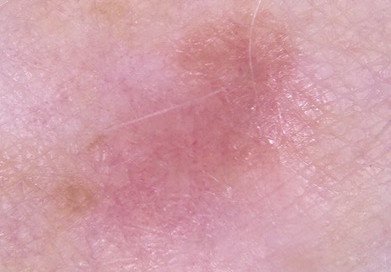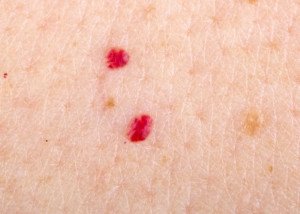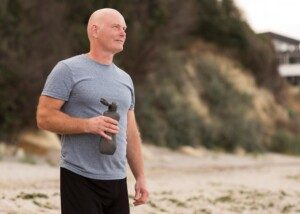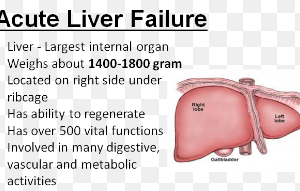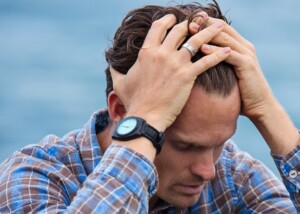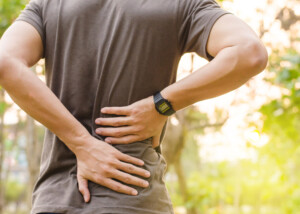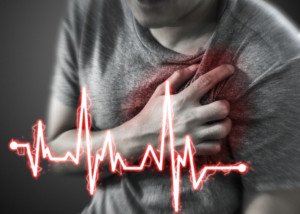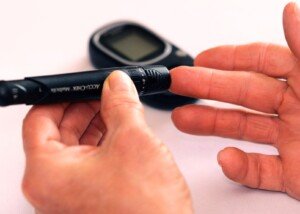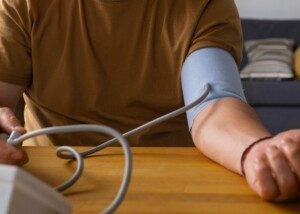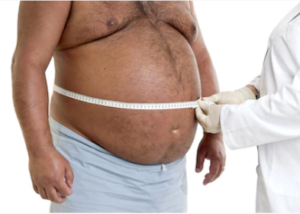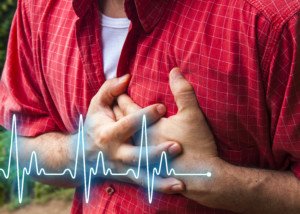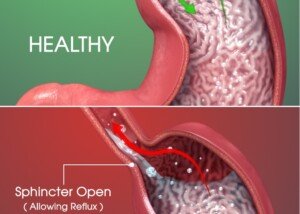How to Spot a Melanoma that’s Flesh or Pink Colored
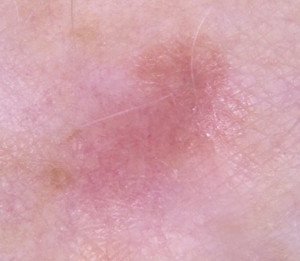
Some melanomas are flesh or pink in color; not always an “ugly black” or “scary brown.”
So how can we spot a pinkish-beige melanoma during self-exams of the skin?
“An amelanotic melanoma can appear pink or flesh colored and is very difficult to diagnose on clinical grounds alone,” says Adarsh Vijay Mudgil, MD, double board certified in dermatology and dermatopathology, and founder of Mudgil Dermatology in NY.
“In a high-risk individual, strong genetic history of melanoma and lots of sun damage, biopsying any new, flesh or pink colored bump is generally good practice.”
University of North Carolina Lineberger Comprehensive Cancer Center scientists wanted to find out just how to spot an amelanotic melanoma.
A melanoma that’s described as being flesh colored or the same tone as one’s skin (which can have a pink tinge) is called an amelanotic melanoma because the “a” means the opposite of, and “melanotic” refers to pigment.
Due to the relative invisibility of amelanotic melanomas, they are more often diagnosed at advanced stages when compared to tumors in a brown or dark range of hues.
This means that this particular melanoma is associated with poorer survival rates.
Pink Colored Melanoma Facts
• Sometimes referred to as “invisible” melanoma. Technically it’s not invisible, of course, but because they’re difficult to spot during an exam, they’re called invisible.
• Two to eight percent of all melanomas are amelanotic.
• Most occur in white patients and start growing as pink — which can be a light pinkish-flesh color, a pinkish red and any shade in between.

• It can even escape detection by a dermatologist conducting a routine skin exam because its color makes its irregular borders and asymmetry more difficult to notice with the naked eye.
“We wanted to identify patients at higher risk for amelanotic melanoma in whom we need to look carefully for this cancer type,” says Nancy E. Thomas, MD, in the study report.
How to Detect Pink Melanoma: Study
The amelanotic melanomas of 178 patients were analyzed. People with certain traits were found to have a higher chance of having this pink tumor.
• Lack of moles on the back
• Many freckles
• Red hair, light eyes
• Inability to tan
People with red or strawberry blonde hair who cannot tan usually have the so-called peaches and cream complexion.

Blondes and even people with brown shades of hair may have this complexion as well.
This complexion has a vague pink tinge to it, and this pink gets more pronounced when the person has been in the sun without sun protection.
The more pronounced the “peaches” part of the complexion becomes, the harder it gets to detect an invisible melanoma, though again, sometimes these tumors are a dark pink or reddish.
People with these traits need to be carefully screened by a dermatologist.
If you have these associated traits, make sure to give your skin a thorough visible sweep from head to toe on a monthly basis.
 Dr. Mudgil treats infant to geriatric patients, and is versed in all aspects of medical, surgical and cosmetic dermatology. He has published extensively in the medical literature plus has lectured at numerous national meetings.
Dr. Mudgil treats infant to geriatric patients, and is versed in all aspects of medical, surgical and cosmetic dermatology. He has published extensively in the medical literature plus has lectured at numerous national meetings.
 Lorra Garrick has been covering medical, fitness and cybersecurity topics for many years, having written thousands of articles for print magazines and websites, including as a ghostwriter. She’s also a former ACE-certified personal trainer.
Lorra Garrick has been covering medical, fitness and cybersecurity topics for many years, having written thousands of articles for print magazines and websites, including as a ghostwriter. She’s also a former ACE-certified personal trainer.
.
Source: sciencedaily.com/releases/2017/08/170809140114.htm
Can You Be Too Old to Get Prostate Cancer?

“The incidence of prostate cancer increases dramatically with age,” says a report by Sandeep Mistry, MD and colleagues. (more…)
Six Surprising Warning Signs of Heart Trouble

There are six surprising signs that warn of serious heart trouble.
Don’t assume that the absence of the classic chest pain and trouble breathing mean there can’t be anything wrong with your heart.
These signs of heart problems are surprising to laypeople, not doctors.
Puffy Feet, Ankles, Swollen Legs
No, this isn’t a normal byproduct of age. Edema has several benign causes, but congestive heart failure is one of the serious causes.
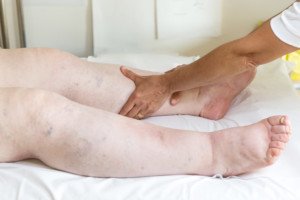
Edema. Shutterstock/Valerio Pardi
“Congestive heart failure can just cause edema and no other symptoms if it is due to purely right sided failure,” says Sameer Sayeed, MD, a cardiologist with ColumbiaDoctors of Somers, NY.
Back Discomfort
A problem with the heart can radiate pain or aching to the back. Sometimes the discomfort is more of a pressure sensation.
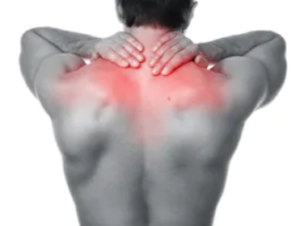
Shutterstock/BLACKDAY
If it’s associated with exercise, it may be heart related, but may also mean a back strain. If it’s associated with mental stress, this could also indicate a heart issue.
If it’s brought on only be certain movements or positions, it’s more likely to be musculoskeletal.
Cramping in the Stomach
Surprise! Who’d ever think that stomach cramps could be caused by a heart issue?

Shutterstock/Dragana Gordic
Discomfort in the belly has a ton of causes (both serious and benign), so it goes without saying: Unexplained stomach cramps or pain mean a visit to the doctor.
Dizziness
This, too, can result from a cardiac valvular problem.

Don’t take these potential warning signs of a heart problem lightly.
Even a physically fit person can develop a cardiac rhythm disorder or have a congenital heart problem that has remained silent for years.
And side effects of some medications can disturb heart rhythm.
Exhaustion

Shutterstock/Miss Ty
This has a ton of causes. When exhaustion occurs without rhyme or reason, out of proportion to the level of physical exertion, there may be a serious problem – with the heart.
Exhaustion from a heart ailment occurs because for any number of possible reasons, the heart isn’t getting adequate blood throughout the body.
Headache
Some people immediately fear a brain tumor when a headache arises, and very few people will ever worry that this means something might be wrong with their heart.
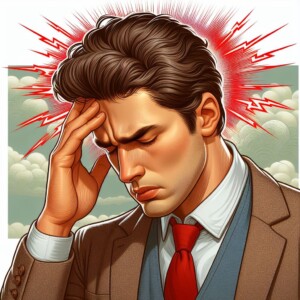
©Lorra Garrick
In the case of a heart ailment, a headache or pain in the head would be accompanied by other suspicious symptoms such as sudden facial numbness/paralysis, sudden one-side limb paralysis or weakness, sudden slurred speech or sudden visual disturbance.
Sound familiar? Dangerously clogged coronary arteries could result in a blood clot traveling to the brain and causing a stroke or transient ischemic attack – both of which could cause head pain.
“In certain patients populations, particularly diabetic patients, women and elderly (age>80 years), the heart attack or myocardial infarction may present with atypical or uncommon symptom complex such as noted above,” points out Asim Cheema, MD, who’s board certified in internal medicine, cardiovascular diseases and interventional cardiology by the American Board of Internal Medicine. Dr. Cheema is with Your Doctors Online, an online doctor chat site.
“These complaints may be present in isolation or in combination,” adds Dr. Cheema.

Dr. Sayeed performs echocardiograms and stress tests at the Midtown Manhattan and Westchester offices at Columbia Doctors. He is also trained in cardiac CT imaging.

Your Doctors Online offers a free 7 day trial where you can ask a doctor questions online and get answers in minutes from anywhere 24/7. Learn more here. Dr. Cheema teaches and provides supervision to graduate students at the Institute of Medical Sciences, University of Toronto.
 Lorra Garrick has been covering medical, fitness and cybersecurity topics for many years, having written thousands of articles for print magazines and websites, including as a ghostwriter. She’s also a former ACE-certified personal trainer.
Lorra Garrick has been covering medical, fitness and cybersecurity topics for many years, having written thousands of articles for print magazines and websites, including as a ghostwriter. She’s also a former ACE-certified personal trainer.
.
Top image: ©Lorra Garrick
Exercises that Will Strengthen Bones Even if You’re “Old”
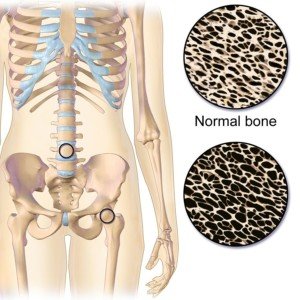
These exercises will strengthen the oldest of bones, no matter how “out of shape” or old you feel.
Fact is, most people do not do the very exercises that strengthen bones.
Perhaps the most important bones to strengthen are your hips. How often does an older person fall and break a femur?
Sure, it happens, but many more times than not, it’s the hip that breaks.
Wrists and arms may get broken too, but the death rate from hip fracture is enormously higher than the mortality rate from upper limb bone breaks.
Exercises that Will Strengthen Older Bones
SQUATS
There are many varieties of squats. This movement is perhaps the best at strengthening hip and leg bones.
“Squats can be done while holding onto the back of a chair or dresser if balance is a concern,” says D’Wan Carpenter, DO, a board certified physical medicine and rehabilitation physician with SIMEDHealth in FLA.
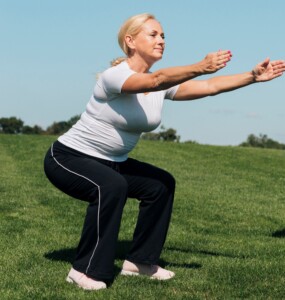
Freepik.com
“I have taught patients who have concerns about knee pain or give way to do modified squats by using a chair with several pillows on the chair as a way to prevent lowering the squat too low and not being able to return to standing or falling,” continues Dr. Carpenter.
“A limiting factor for many of the patients I have evaluated has been concomitant knee pain and/or arthritis, which make squats, even modified, difficult to achieve.”
YOGA
No, you do not have to be flexible to take up yoga. Yoga will make you more flexible.
Yoga is a “great exercise for strengthening bones because of the low-impact weight bearing nature,” says Dr. Carpenter.
“Additional benefits of yoga are increasing balance, increasing flexibility, and strengthening.”
LEG PRESS
Gyms have leg press equipment. You’re never too old to have a gym membership. With the leg press you don’t have to worry about “wrenching” your back, because it lies immobile against the seat.
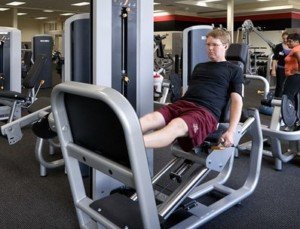
However, if you have pre-existing back problems, this equipment might not be the best choice.
“A great number of people have current or previous back issues, and sometimes the leg press can cause some additional discomfort in those individuals,” says Dr. Carpenter.
If your back is okay, though, give the leg press a try. It works the entire lower extremities, which is very important for older people.
“In my experience, many of my patients need simple options,” says Dr. Carpenter.
“The best exercises in my opinion are those that people don’t require much instruction to complete effectively.
“I would add walking, dancing, Tai Chi and weightlifting — as in using dumbbells.”
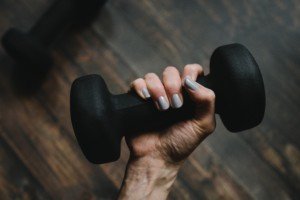
“Mature adults should discuss with their personal physician before beginning any physical activity, as their personal doctor will know specifics about their medical history and any contraindications.
“In regards to yoga, persons already osteoporotic should avoid certain yoga poses and positions (i.e., forward spinal flexion without support) — as the already-fragile bone may develop fractures as a result.
“Many yoga instructors can demonstrate modified positions for these individuals to reap the benefits with less risk.”
PLYOMETRICS

Freepik.com, cookie_studio
This means jumping, e.g., up and down. And yes, older people, even with osteoarthritis, can strengthen their bones this way.
A study from the Department of Health Sciences at University of Jyväskylä, Finland, showed strong evidence of bone strengthening in the subjects who were women 50-65 with mild osteoarthritis of the knees. Knee pain did not result from the high impact jumping routines.
RAPID CHANGE OF DIRECTION
The same study notes that exercises involving rapid change of direction are superb at inducing improved bone strength.
An example would be trotting or walking to one end of a fitness studio and then as quickly as possible turning around and trotting or walking to the other end, and so on.
 Dr. Carpenter is one of the nation’s top board-certified physical medicine and rehabilitation physicians, a national speaker, medical legal expert and independent medical examiner. She is founder and Chief Medical Officer of DJC Physical Medicine Consultants. Follow Dr. D’Wan on Twitter.
Dr. Carpenter is one of the nation’s top board-certified physical medicine and rehabilitation physicians, a national speaker, medical legal expert and independent medical examiner. She is founder and Chief Medical Officer of DJC Physical Medicine Consultants. Follow Dr. D’Wan on Twitter.
 Lorra Garrick is a former personal trainer certified through the American Council on Exercise. At Bally Total Fitness she trained women and men of all ages for fat loss, muscle building, fitness and improved health.
Lorra Garrick is a former personal trainer certified through the American Council on Exercise. At Bally Total Fitness she trained women and men of all ages for fat loss, muscle building, fitness and improved health.
.
Top image credit: BruceBlaus
Source: sciencedaily.com/releases/2015/02/150218073002.htm
Why the Standard American Diet May Be Killing You

The standard American Diet (SAD) is dropping people left and right. SAD is so bad for the heart.
If you eat what everyone else eats, why would you have a healthy diet?
Do you KNOW what everyone else eats? Or nearly everyone else?
The standard American diet.
This dinner looks healthy, doesn’t it?
Chicken breast
Broccoli florets
Wild rice
Lentil soup
Green salad with ranch dressing
Whole wheat roll
Don’t be fooled by the variety. If this meal was purchased in boxes, cans and bags, it may contain many, if not all, of the most toxic ingredients that are ubiquitous in the American food supply:
Added sugars including high fructose corn syrup
Trans fats
Sodium, potassium benzoate, BHT, BHA (preservatives)
Monosodium glutamate (MSG)
Food dyes and colorings
Nitrates (a carcinogen)
Toxins are everywhere in SAD: the standard American diet.
Even something as simple as Kroger’s bread crumbs are full of high fructose corn syrup, sugar, dough conditioners, trans fat and preservatives.
So if you think that cutting back on commercially baked goods like donuts is all it takes to “eat healthy,” you’re deeply mistaken.
What’s in your salad dressing could be contributing to plaque buildup in your arteries!
Standard American Diet = Disease
Just because 27 million Americans are living with heart disease, doesn’t mean that this killer has to be a part of growing old and can’t be prevented or minimized.

Shutterstock/Lightspring
Centers for Disease Control for the U.S.
• Almost 26 million have diagnosed diabetes, and tens of millions are prediabetic.
• About 31 percent have high blood pressure.
• About 795,000 new stroke cases occur every year.
• Over 65 percent of adults are either overweight or obese.
If that isn’t chilling enough, the American Cancer Society reports that one in three women, and one in two men, will be diagnosed with cancer.
The World Health Organization reports that processed foods (e.g., escalloped potato mix in a box, luncheon meats) are the culprit behind the accelerated levels of chronic disease and obesity worldwide.
According to a New England Journal of Medicine (2006) report of a Harvard study, avoiding white-flour based foods can significantly cut a woman’s risk of heart disease.
Heart disease and other killer diseases are rare among modern-day hunter-gatherers.
When hunter-gatherers adopt the standard American diet, their rate of disease soars and eventually matches those of long-time U.S. residents.
Heart Disease Teams up with the Standard American Diet
Atherosclerosis is arterial plaque buildup. “It starts with small deposits of cholesterol and fat in the artery’s inner wall that elicit an inflammatory response,” says Dr. Jonathan Fialkow, board certified cardiologist and certified by the American Board of Clinical Lipidology, whose experience includes being medical director of EKG, Stress Lab and Cardiac Rehabilitation for Baptist Cardiac and Vascular Institute.
Dr. Fialkow continues, “The inflammation eventually weakens the artery wall, which over time may lead to narrowing or disruption of the artery wall.”
Narrowing does lead to blockage, but “the real danger is when the vessel wall weakens and rips and a blood clot forms to block flow.”
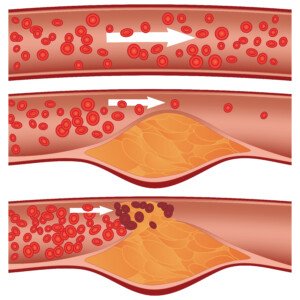
Shutterstock/ Diamond_Images
This silent, stealthy process is decades in the making. “The speed with which it occurs depends on many factors, most notably genetics.”
As the saying goes, Genetics load the gun, but lifestyle habits pull the trigger.
“Certain people will more readily deposit fat and cholesterol in the arteries as a response to diet, activity, stresses and environmental factors than others,” says Dr. Fialkow.
You don’t know which category you fall into, so why play Russian roulette with the standard American diet?
Maybe you are destined to develop life-threatening heart disease late in life rather than earlier, and Dr. Fialkow explains, “You may have taken longer to reach this level of disease because you may have led a relatively healthier lifestyle than others.
“But, over 80 years, the accumulative exposure to dietary stressors led to this disease, which progressed while you were unaware.”
Standard American Diet Foods that Are Marketed As Healthy
Salad dressing. Essentially, name-brand salad dressings are pourable candy!
“Yes, read the labels, and sugars are on the top of the list…or there are several sugars throughout the product making sweeteners the biggest ingredient,” says Carolyn Dean, MD and also naturopathic doctor (ND) and clinical nutritionist; medical director, Nutritional Magnesium Association.
Luncheon/deli meats. Many people think these are redeeming when in chicken or turkey form. Dr. Dean warns, “Processed meats have dye, nitrates, BHT, BHA and MSG.”
They often also contain high fructose corn syrup and are sky-high in sodium. Nitrate-free deli meats are not the solution.
Canned soups. Not only is the sodium content off the charts, but these often contain benzoates and artificial sweeteners. Some brands contain manmade sugars.
Fiber-added cereals. Most cereal is full of white sugar and various forms of syrup. Many contain chemical dyes, preservatives and artificial flavoring.
Many cereals, though marketed as breakfast food, score as bona fide junk food. So if you don’t think you have a junk food diet, take a look at your cereal choices.
Canned vegetables. “Foodstuffs have to be sterilized to be canned so no organisms survive to contaminate the food,” says Dr. Dean.
“Sterilizing means high enough temperatures to kill all the enzymes in the food, meaning you are eating dead food. The body does not thrive or even survive on dead food.”
Whole grain bread. Wait a minute—aren’t whole grains supposed to be healthful?
Well, sure—but whole grains mixed with preservatives, dough conditioners and sugar means you’re still picking up a snake.
“The taste, texture and durability of a product all seem to require a handful of chemicals that add up to toxins that our liver and immune system have to deal with,” says Dr. Dean.
Ditching the Standard American Diet Needn’t Mean Obsessing with Food Labels
Once you find an all-natural brand that tastes good, you no longer have to read ingredients!
This conversion process is faster than you think.
Furthermore, nearly all commercially baked goods have synthetic chemicals and trans fat; no reading necessary—just outright avoid buying anything in the bakery/bread department of a conventional grocery store!
Is the Standard American Diet Harmful to Thin People?
Dr. Fialkow explains, “One can have what we call ‘metabolic obesity’ which is the dyslipidemia (excess blood fat) of an overweight person without the abdominal weight gain.
“Sometimes these are genetic disorders leading to elevated triglycerides. Generally, if you are gaining weight mostly in the belly, its a carb problem.
“If you are thin and have abnormal cholesterol particles, then again, it may be due to carb metabolism.”
Carb metabolism?
“Inflammation is a broad process, used best by our bodies as the means to fight infection and foreign substances, such as a splinter in the foot,” says Dr. Fialkow.
“When the cholesterol/fat gets into the artery wall where it doesn’t belong, the body elicits the inflammatory response to fight the foreign substance.”
This goes on for decades as long as the standard American diet is at work.
“Part of the inflammatory response is destruction of tissue, and part is deposit of scar-like tissue and calcium to try and stabilize the destroyed tissue,” continues Dr. Fialkow.
“This can be picked up with blood tests like the c-reactive protein (CRP) or with calcium scans that look for the results of inflammation in the arteries in hopes of discovering it long before a heart attack happens or stent is needed, or death.”
By luck of the genetic draw, some people escape the ravages of the standard American diet and live into their 90s with barely a runny nose, much less heart attack or type 2 diabetes.
But there is no test that determines who wins genetic lotteries. Sure, we’re all going to die anyways, but death by standard American diet is an awful way to go.
 Dr. Fialkow has been a principal investigator in numerous major clinical trials in the cardiology arena and has analyzed the effectiveness of countless popular diet plans and ways of eating.
Dr. Fialkow has been a principal investigator in numerous major clinical trials in the cardiology arena and has analyzed the effectiveness of countless popular diet plans and ways of eating.

Dr. Dean, in practice for 35+ years and author of “The Magnesium Miracle,” is also a naturopath, nutritionist, herbalist, acupuncturist, lecturer and consultant.
 Lorra Garrick has been covering medical, fitness and cybersecurity topics for many years, having written thousands of articles for print magazines and websites, including as a ghostwriter. She’s also a former ACE-certified personal trainer.
Lorra Garrick has been covering medical, fitness and cybersecurity topics for many years, having written thousands of articles for print magazines and websites, including as a ghostwriter. She’s also a former ACE-certified personal trainer.
How to Overcome Obsessing About Your Blood Pressure Readings

Do you check your blood pressure tons of times every day, always thinking about that BP monitor, disrupting your concentration at work?
Does even a systolic reading of 152 send you into panic mode, even though you know this reading is the result of all the stress you’re putting yourself through? (more…)
You Can’t just “Think” Yourself Healthy in Body if You’re Obese

There’s more to being healthy than having normal blood sugar and pressure; obesity cannot be any healthier than is smoking.
A clinically obese woman may be able to train for a 5K or go on lengthy hikes every weekend, and she’s definitely in better shape than if she were sedentary. (more…)
Angina vs. Atypical Angina: Is Atypical Heart Related?

The term angina refers to chest pain brought on by a heart problem—specifically, ischemia or a shortage of oxygen due to restricted blood flow through the coronary arteries. (more…)
What Is the Worst Cancer a Child Can Get?

Cancer can be deadly to any child if not caught early enough.
But the worst cancer that a child can get is a particular type that no matter how early it’s caught, it will always kill the patient.
This cancer in children has a 100 percent fatality rate, though some kids have been known to survive it for three or four years following diagnosis.
“Diffuse intrinsic pontine glioma (DIPG) is arguably the most aggressive tumor in children,” says Jonathan Stegall, MD, an integrative oncologist and medical director for The Center for Advanced Medicine, an adult cancer treatment center in Alpharetta, GA.
“It is also very difficult to treat, as it occurs in the brainstem and can thus affect vital functions including breathing, heart rate and blood pressure.”
Diffuse Intrinsic Pontine Glioma
Sometimes, “intrinsic” is replaced with “infiltrating.” The common reference is DIPG.
There are many cancers that are nothing short of devastating to children and their parents, but even then, with those (such as osteosarcoma and lymphoma) there’s hope for a long-term survival – even well into adulthood.
But DIPG?
This is truly a monster for which treatment has not improved in over 40 years.
This is the worst cancer that a child can get when you consider survival odds and no advancements in treatment for decades.

DIPG. Source: Sison J, Tran H, Margol A, et al
What Is DIPG?
“This type of cancer is rare, occurring in roughly 300 children each year in the United States,” says Dr. Stegall.
However, over three times more U.S. children are killed every year by this lethal brain tumor than the average number of adults killed by terrorist attacks every year – between 1975 and 2015!
If we include the 9/11 attacks in the total number of U.S. citizens murdered by terrorists since 1975, that annual average comes out to 74.
Meanwhile, about 200 to 400 kids every year are diagnosed with DIPG. And this cancer WILL kill them.
DIPG Facts
• 10% of kids with DIPG are still alive two years after diagnosis.
• After five years it’s one percent.
• No adult walking this earth was diagnosed with DIPG as a young child.
• In very rare cases, within the rarity of this disease, some diagnoses are made on older teens and people in their early 20s and even 30s.
With that said, nobody age 40 who’s alive was ever diagnosed with DIPG.
• Average survival after diagnosis is nine to 12 months — when radiation treatment is given.
• No matter how early it’s caught, this doesn’t change the terminal nature.
• There is no such thing as “beating this thing” as a result of prayers, a warrior attitude or keeping one’s spirits up. DIPG is what it is: a ruthless killer that backs down to nothing (yet).
The Perfect Killer
When many people visualize a brain tumor, they think of a spherical or blob-shaped mass setting amid the brain matter, especially since tumor size is often compared to a golf ball, ping pong ball or tennis ball.
But extracting a DIPG surgically is not like plucking a golf ball out of brain tissue.
In the case of the worst cancer that a child can be diagnosed with, DIPG grows and sets diffusely within brain cells.
It cannot just be plucked out with surgical instruments. Imagine putting some shredded printing paper (symbolic of healthy brain tissue) into a bowl.
Add in wet tissue paper (symbolic of cancer). Now mix it up. Now see if you can pluck out the tissue paper without “damaging” the printing paper.
DIPG is inoperable for this reason – it’s diffusely amid brainstem tissue, rather than setting in there like a golf ball as a solid mass that can just be lifted out.
Initially most DIPG tumors respond to radiation by retracting, but at some point they “learn” to fight back and are unstoppable.
Chemotherapy never works.
The worst cancer that can strike a child may be exceptionally rare, but the statistics don’t matter to the parents.
Furthermore, if medical science could figure out a way to destroy DIPG, or at least cripple it enough to give patients many more years, imagine how this discovery would carry over to other cancers, especially adult brain tumors.
More Facts on the Worst Cancer for Children
• DIPG destroys everything (ability to move, eat, talk) except the ability to know what’s going on; kids at the educable age know what’s happening to them.
• Radiation is not a treatment per se; it’s a time-buyer – usually just three months.
• Proton beam therapy will not work; imagine trying to zap out all that wet tissue paper mixed in with the printing paper by using a pinpointed beam – without hitting any of the printing paper.
• The cause is not known and apparently not related to lifestyle or diet.
Wouldn’t it be great if next time you tuned into CNN, you saw a panel of analysts covering the latest advancements by world leaders – unified by a common goal – to wipe out DIPG and other cancers?
A discovery of how to combat it would open the doors to more effectively conquering other kinds of cancer in all age groups.
Let’s give this one more dose of perspective. When a U.S. commercial airliner crashes and kills all 250 people on board, headlines ripple for weeks while there is a massive and aggressive governmental investigation. And there should be.
About the same number of kids die every year from DIPG. Where is the massive and aggressive governmental investigation?
As one mother of a child with DIPG once said, “We live in an age where we spend billions of dollars to send satellites into space, and we don’t even get upset when they get lost! But 250 children die every year from a brain tumor, and we allow that to go on.”
 Jonathan Stegall, MD, provides a long-awaited remedy for our cancer problem. Having a successful integrative oncology practice in Atlanta, GA, he’s seen firsthand what works and what doesn’t with cancer treatment. Dr. Stegall is the creator of the Cancer Secrets Podcast and author of “Cancer Secrets,” available on Amazon.
Jonathan Stegall, MD, provides a long-awaited remedy for our cancer problem. Having a successful integrative oncology practice in Atlanta, GA, he’s seen firsthand what works and what doesn’t with cancer treatment. Dr. Stegall is the creator of the Cancer Secrets Podcast and author of “Cancer Secrets,” available on Amazon.
 Lorra Garrick has been covering medical, fitness and cybersecurity topics for many years, having written thousands of articles for print magazines and websites, including as a ghostwriter. She’s also a former ACE-certified personal trainer.
Lorra Garrick has been covering medical, fitness and cybersecurity topics for many years, having written thousands of articles for print magazines and websites, including as a ghostwriter. She’s also a former ACE-certified personal trainer.
.
Top image: Shutterstock/MelashaCat
Sources:
defeatdipg.org/dipg-facts/overview/what-is-the-prognosis-for-a-child-diagnosed-with-dipg/
defeatdipg.org/dipg-facts/overview/what-is-dipg/
businessinsider.com/death-risk-statistics-terrorism-disease-accidents-2017-1
meyercancer.weill.cornell.edu/news/2015-07-01/new-angle-for-DIPG-brain-cancer
Can Melanoma Be Yellow?

Every time you see a picture of a melanoma, it’s either black, grey, some shade of brown, magenta, red, bluish, purple or pink, but never yellow.
However, the color of yellow is absolutely possible in a melanoma. (more…)

